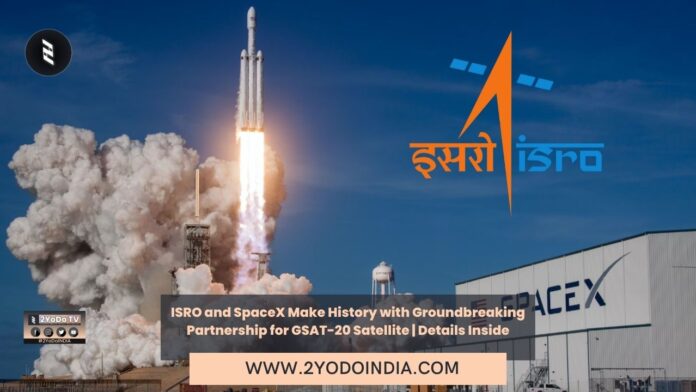Indian Space Research Organisation (ISRO), came together with Elon Musk’s SpaceX for the upcoming launch of the GSAT-20 communications satellite. NewSpace India Limited (NSIL), ISRO’s commercial arm, made the historic announcement, marking the first collaboration between India and SpaceX.
The GSAT-20 mission, schedule for the second quarter of 2024, aims to address India’s communication needs, particularly in remote and unconnect regions.
GSAT-20 surpasses ISRO’s current highest spacecraft launching capacity of 4,000 kg, highlighting the satellite’s significance in enhancing broadband communication across the country.
This partnership underscores Elon Musk’s growing interest in expanding his businesses in India, with discussions underway for a potential investment proposal from Tesla to establish an electric vehicle factory in the country.
While facing some resistance from the domestic industry, Elon Musk’s ambitious plans also include introducing the Starlink satellite broadband service to India.
The GSAT-20 satellite will ride into space aboard SpaceX’s Falcon 9 rocket, known for its reusable design.
Falcon 9 holds the title of the world’s first orbital-class reusable rocket, boasting an impressive track record of 285 launches, 217 re-flights, and 243 landings.
The launch service contract between NSIL and SpaceX solidifies the collaborative effort, showcasing the potential for future cooperation between the two space exploration entities.
GSAT-20 represents ISRO’s second ‘demand-driven satellite mission,’ following the successful launch of GSAT-24 in June 2022.
Tata Play secure the capacity of GSAT-24, marking a significant step in meeting India’s growing communication demands.
The high-throughput satellite GSAT-20, fully own, operate, and fund by NSIL, is set to provide a capacity of 48 gigabits per second.
The mission’s focus on cost-effective Ka-Ka band HTS capacity aims to meet the broadband, IFMC, and cellular backhaul service needs of the country.
As India and SpaceX embark on this historic mission, experts anticipate a potential shift in India’s satellite launch capabilities, even as some suggest that ISRO may still need to develop rockets capable of carrying heavier payloads into space.
The GSAT-20 collaboration opens a new hope in the global space exploration narrative, emphasizing the synergy between establish space agencies and private players in advancing space technology for the benefit of nations.





